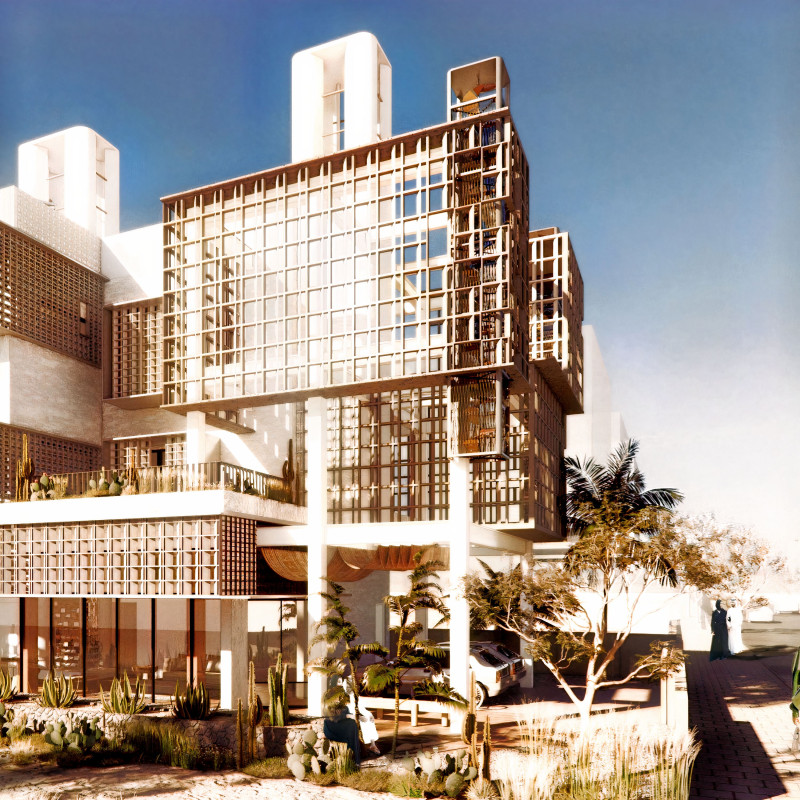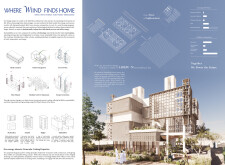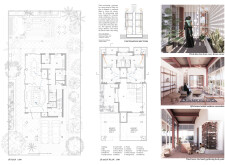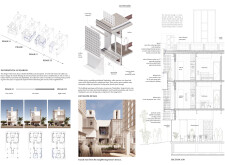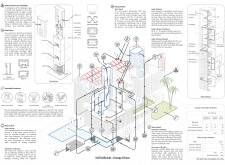5 key facts about this project
"Where Wind Finds Home" is a comprehensive residential initiative located in Dubai, UAE. It focuses on sustainable living solutions tailored for low-income communities. The design emphasizes environmental responsiveness and energy efficiency, aiming to create a functional living space that interacts dynamically with the local climate. This project serves as a model for future housing developments that prioritize sustainability and community resilience.
Sustainable Integration and Family-Centric Design
This project embodies a commitment to sustainable integration within urban settings. Key features include a wind tower that harnesses natural breezes, allowing for passive cooling and improved air circulation, significantly reducing reliance on mechanical cooling systems.
Additionally, solar panels placed strategically on roofs enhance the energy independence of the homes by generating surplus electricity. The project incorporates a modular design approach, providing flexibility for families as their needs evolve, allowing for expansion without extensive reconstruction. Outdoor spaces are integral to the design, fostering interactions with nature and the surrounding community through open-air patios and communal gardens. The arrangement of spaces prioritizes both private and social interactions, creating an environment conducive to family life while inviting community connectivity.
Innovative Climate Adaptation and Resource Management
A distinguishing characteristic here is its methodical approach to climate adaptation. Utilizing local architectural traditions, the design incorporates passive cooling strategies that address the hot, arid climate of Dubai. Features such as solar chimneys enhance natural ventilation, further contributing to the energy efficiency of the homes. The inclusion of rainwater and greywater harvesting systems signifies a commitment to responsible water management, supporting both domestic use and landscaping needs. Materials play a vital role in the project’s sustainability. The use of hollow bricks for external walls promotes thermal comfort, while recycled plastic cladding reduces environmental impact. Internal finishes utilize moisture-resistant gypsum plastering, enhancing durability and aesthetics.


